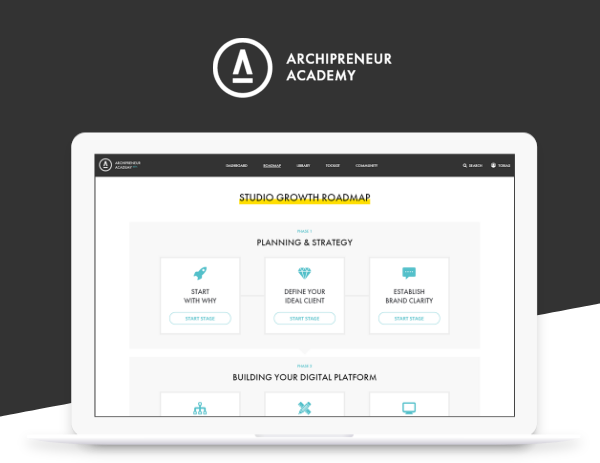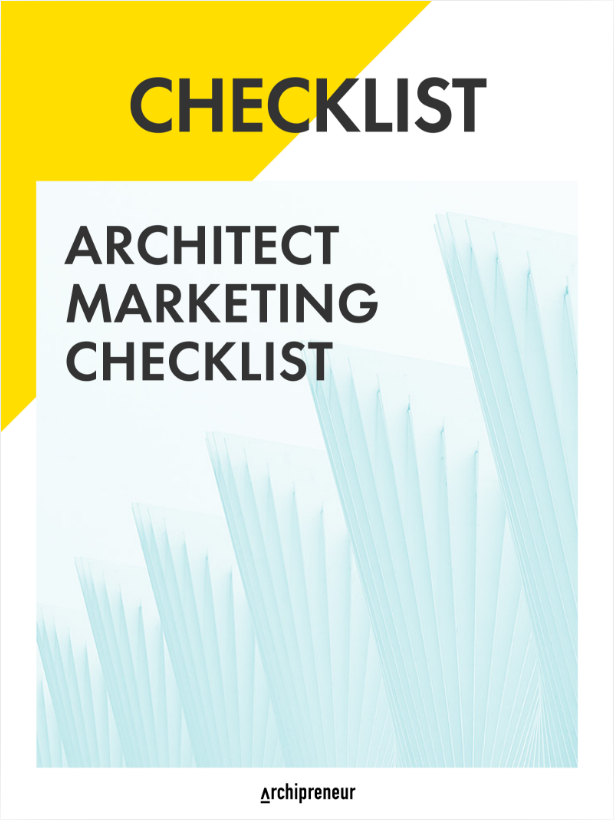
How Architects Can Use Their Existing Skill Set to Become Savvy Marketers
“If I make good designs, then clients will come.” – This one of the biggest mistakes architects make. Your work may be excellent, but if it doesn’t have any way to reach your prospects, it might as well not exist. A well-executed marketing strategy can go a long way in bringing in new clients and customers.
Most architects enter the profession with little to no knowledge on how to implement a smart marketing strategy. This is one of the reasons marketing is often neglected by AEC businesses.
An archipreneur could take advantage of this knowledge gap. Architects can build on their existing skill set to become savvy marketers.
Throughout our architectural education, we are taught to be problem-solvers. We present our project in front of juries, clients and peers. We deploy strategies for effectively researching topics. We can analyze the data we find. We can deliver detailed designs. Marketing, then, is just a natural extension of these skills.
Here we’ll cover the basics how you can start out with marketing. Keep in mind that many clients think of architecture services as a cost and not a value. This should be the starting point for all your marketing efforts: clients are interested in added value. Your job is to communicate that value as persuasively as possible.
A lot of new companies start out with ‘tactical experimentation’. That means throwing all kinds of content out at broad demographic categories and seeing what fits with which demographic best. This is not a good approach.
More often than not, this approach results in excessive money spending and companies not being sure of how to untangle the statistical evidence they receive.
The solution: Figure out your:
- Company’s mission
- Target audience
- Value proposition
- Situation
- Marketing infrastructure.
Then use that information to guide your tactical experimentation.
#1 – Mission
‘We stand for quality’
‘We are a multidisciplinary, award-winning firm, cutting-edge…’
‘We undertake a variety of projects’.
You’ve heard them all, but none of these taglines helps anyone in understanding what your company actually does. Superlatives are meaningless without useful information as to the ethos of your company.
Differentiating yourself from your competitors is not easy, but your efforts have to go beyond these sound bites. Your mission shouldn’t be taken lightly. It is responsible for the ‘About Us’ section on your website, your logo design, color scheme, types of projects, office culture and letterheads, among others.
#2 – Target Audience
If you want to attract the right customers, it’s essential that you develop a target audience profile. Use your analyzing skills here. You can start to build a profil by answering the following questions:
- Are you offering your services to businesses or individuals?
- To what age group do they belong?
- What’s their social status?
- Are they conservative or liberal?
- Where are they located?
- Which social media channels do they use?
- What is their likely family situation and lifestyle?
One great way to tap into a ‘ready-made’ group is to try cohort marketing. Cohort marketing targets people within a demographic of shared experiences and interests. The Internet is a fantastic resource for finding these groups, for example in LinkedIn or Facebook groups.
#3 – Value Proposition
This is the part of your marketing strategy that can help you really stand out. A value proposition explains how your service or product will help solve a customer’s problem.
How is that different from your mission statement? Your value proposition communicates how your offer will positively change a method of work or an activity for your clients.
Let’s re-establish: If you offer great value but are not doing a good job of communicating it, you will not attract clients.
Your value proposition should be the first thing that visitors will see on your company’s homepage, and should be written in clear and simple language.
A great value proposition should closely reflect your target audiences’ desires. The best value propositions are clear and concise, promise concrete results, and explain how your services are unique. They highlight:
- Why your clients should pay attention to you and not your competitors,
- Why they should subscribe to your email list, and (most importantly of all)
- Why they should hire you.
#4 – Situation Analysis
Analyze your company’s current situation as comprehensively as possible. Take a critical look at its weaknesses as much as you do its strengths. Think about how you have set up your organization and business model, and how they respond to the external influences and threats you have defined.
Ask yourself the following questions:
- What is your mission statement and how attractive is it for your clients?
- Would you invest in your company?
- Who are your competitors?
- What are they doing that’s unique?
- Are there (m)any potential investors?
- What are the most promising opportunities for growth?
- How can you improve your services to better fit the market?
- Which markets accommodate the type of service(s) you provide?
#5 – Create a Marketing Infrastructure
Architects are used to preparing exhaustive documentation about projects, designs and construction processes. The same rigor has to be applied to your marketing efforts.
In order to keep track of the most successful marketing efforts that have brought in clients, you will need to create project and client databases, along with photo galleries of your work.
Creating a well-organized marketing infrastructure is the best solution for companies that cannot yet afford to hire expert marketers and lay the foundations for future marketing strategies.
***
All that being said, there is no single marketing solution that works for everyone. There is a marketing strategy for each archipreneur, because each has his or her own story. And marketing, at its most basic definition, is simply telling your story – to your market.
Every potential client starts their search with a clear vision of what they are looking for. They have created their own story for what they want and for who they are looking. Your goal is to replace their story with yours.
Finally your story, told at meetings, in interviews, by the way you communicate with clients on the phone, in email and on social media – in short through every point of contact you have with the world, online and off – becomes your brand.
How are you telling your story?
Join our Newsletter
Get our best content on Architecture, Creative Strategies and Business. Delivered each week for free.

JOIN THE
ARCHIPRENEUR ACADEMY
- 9 Stage Studio Growth Roadmap
- Library of In-Depth Courses
- Checklists and Workbooks
- Quick Tips and Tutorials
- A Supportive Online Community















